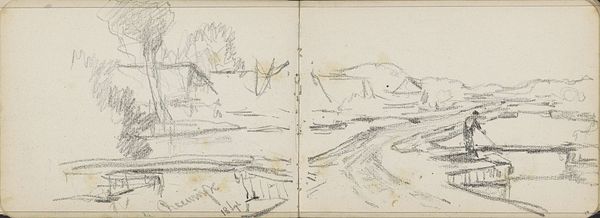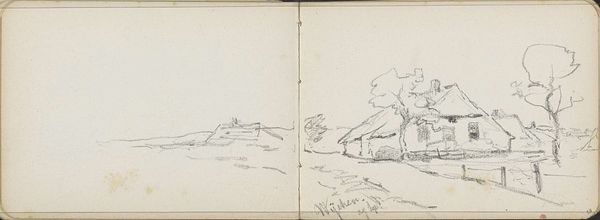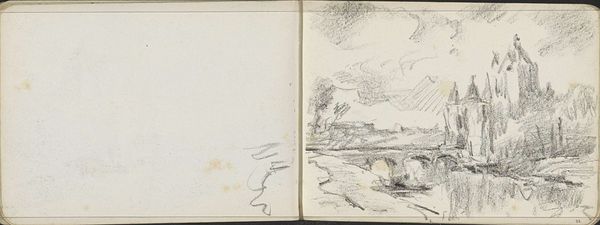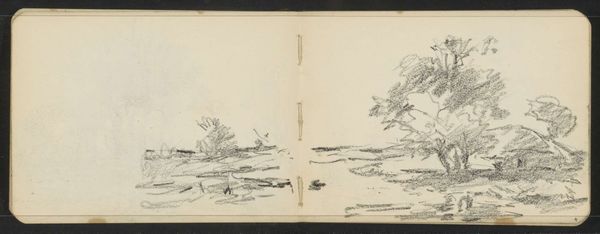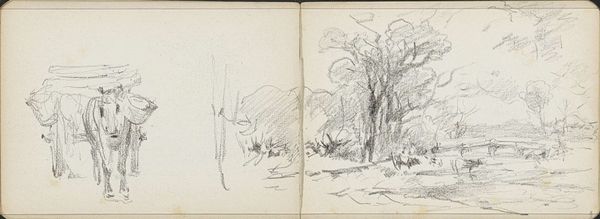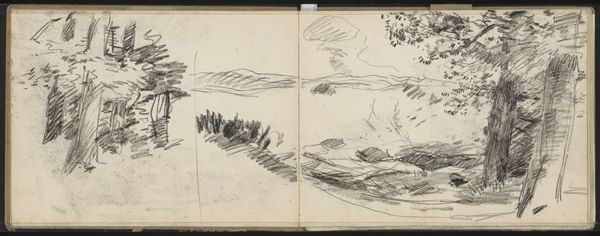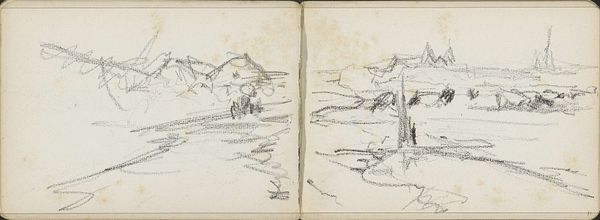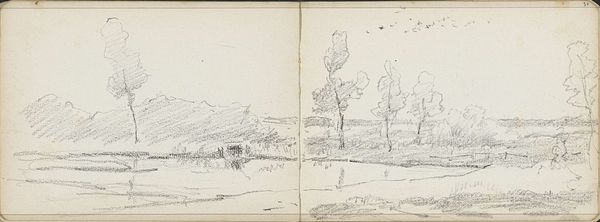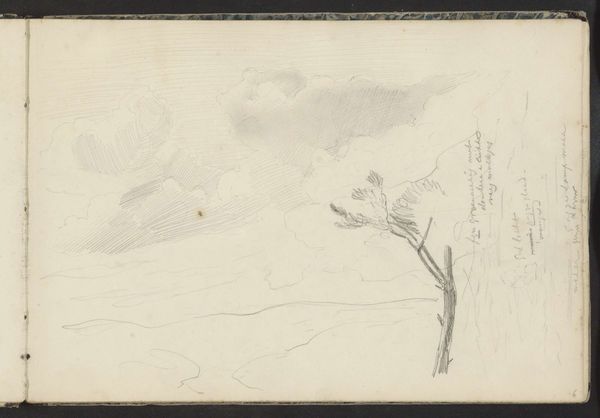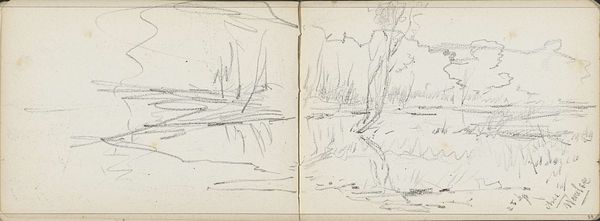
drawing, pencil
#
drawing
#
landscape
#
pencil
#
realism
Copyright: Rijks Museum: Open Domain
Editor: This is "Landscape with Trees and Water," a pencil drawing by Willem Cornelis Rip, dating sometime between 1866 and 1922. The scene feels so quiet, almost like a fleeting moment captured in time. What do you see in this piece from a formalist perspective? Curator: It is through the careful arrangement of lines that the artist evokes a sense of depth. Observe the density and direction of the pencil strokes, especially the texture defining the reflection of the trees in the water. This gives us form and structure. How would you consider the placement of this reflection? Editor: It bisects the composition. And those vertical strokes create such a contrast with the softer, more horizontal lines of the distant land and the water's surface. Curator: Precisely! And that contrast draws attention to the surface quality of the artwork itself. It reminds us it is a flat drawing. Now, consider the economy of the drawing. The artist uses minimal means to conjure atmosphere. Are we to assume a mere mimetic function for this picture? Editor: I suppose not. While the drawing imitates nature, it focuses on essential visual components, and the relationships of their forms, in order to translate his perception to paper. The bareness reminds the viewer of art's structure. It's so elemental. Curator: Indeed. Perhaps focusing on its pure structure illuminates the drawing. The landscape offers a world, but its material form returns us to earth. Editor: It makes me look more closely at the way an artist constructs an image rather than just what the image depicts. Thank you. Curator: A worthwhile thing, isn't it? Looking with intent will teach more than seeing more.
Comments
No comments
Be the first to comment and join the conversation on the ultimate creative platform.
